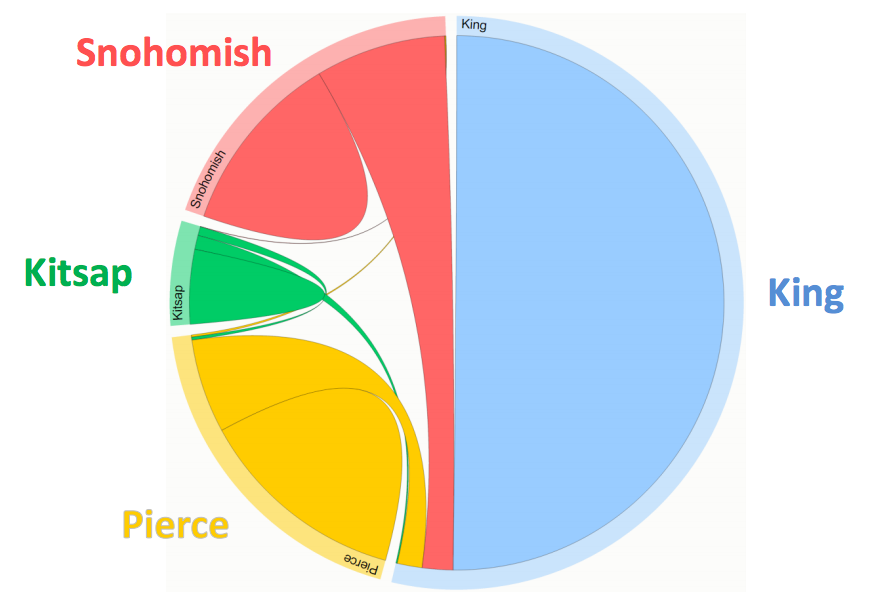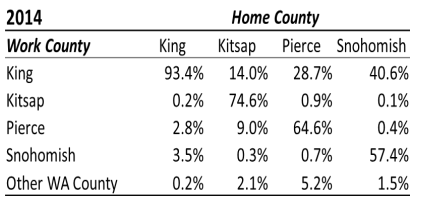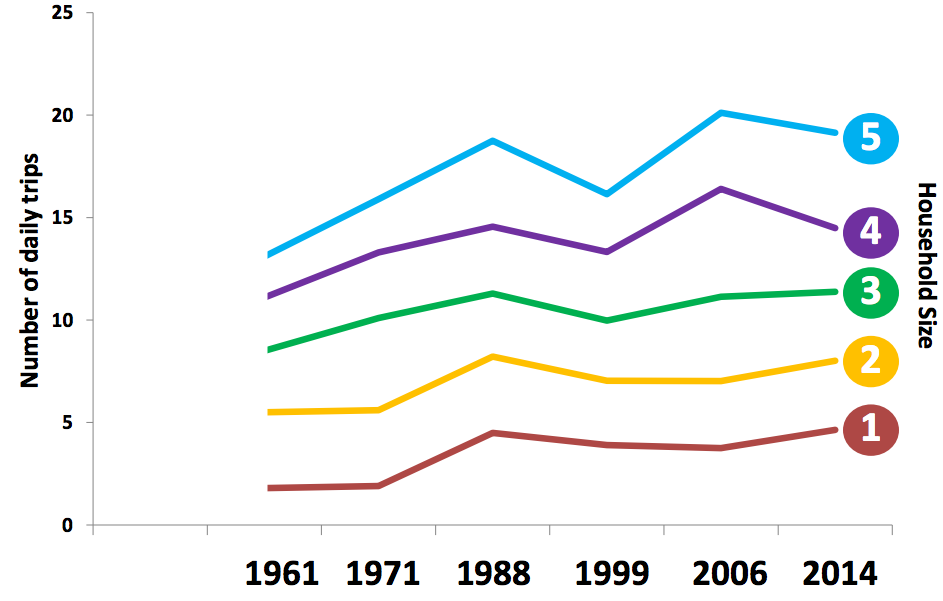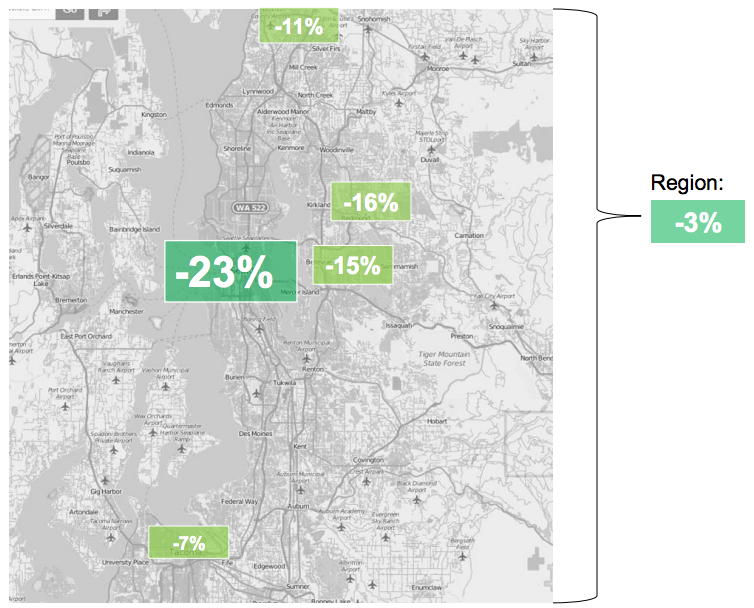
The Puget Sound Regional Council (PSRC) released its most recent findings on regional commuting trends for 2014. Since 1961, the region has cobbled together commute surveys to find out where residents are going, how they’re getting there, and how often they decide to make trips.
The 2014 Puget Sound Travel Study surveyed 6,094 households throughout the region with 1,137 of those coming from regional centers. The study explores some interesting data points like mode share by regional employment centers, modal choices by age groups, a breakdown of fuel sources for vehicles, and percentage of trips with free parking to specific uses.
I want to share three particular highlights from the study, specifically: county-to-county commute habits, trips by household size, and the reduction of driving in particular regional centers.
Looking at the four counties (King, Snohomish, Pierce, and Kitsap) of the PSRC, it’s abundantly clear that there is a commuting bias to and within King County. Over 90% of King County residents work in the county while large shares of county residents in Snohomish (40%), Pierce (29%), and Kitsap (14%) also commuting to King County for employment. Only 6% of King County residents actually commute out of the county for work.

Daily trips by household size has gone up since 1961. Perhaps some of the early growth in daily household trips can be attributed to sprawl that occurred rapidly in the region until the mid-2000s. There’s not a lot of conclusions to draw from the data per se, but there does appear to be a reduction in daily trips for larger household sizes since 2006 while 1- and 2-person households have seen very modest increases.

From 2006 to 2014, regional centers in Seattle, Redmond, Bellevue, Everett, and Tacoma saw significant drops in driving as mode share. Seattle’s central regional growth center saw a whopping 23% decrease in the driving mode share over the period while the Eastside cities of Redmond and Bellevue experience 15%+ drops of their own. On a region-wide basis, the number is much more modest with a 3% reduction in the driving mode share.

Stephen is a professional urban planner in Puget Sound with a passion for sustainable, livable, and diverse cities. He is especially interested in how policies, regulations, and programs can promote positive outcomes for communities. With stints in great cities like Bellingham and Cork, Stephen currently lives in Seattle. He primarily covers land use and transportation issues and has been with The Urbanist since 2014.


